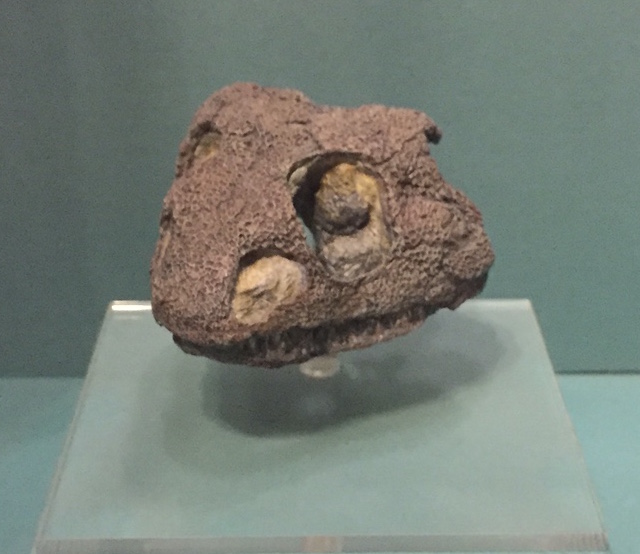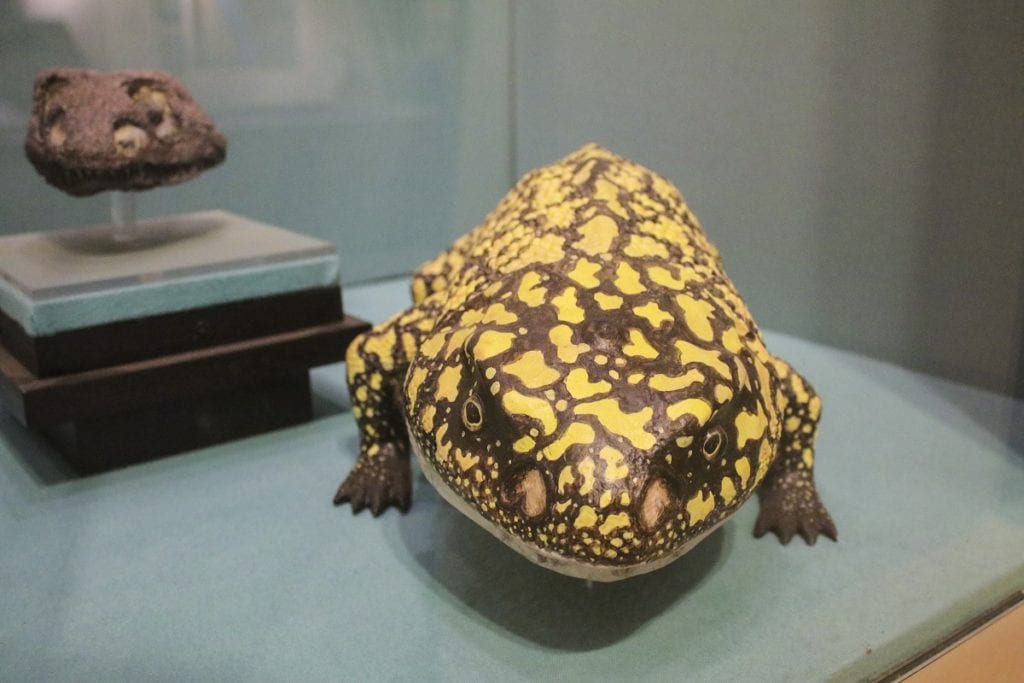
Visitors can examine all different types of x-rays at Discovery Basecamp, our new permanent, interactive gallery that invites visitors to take part in hands-on learning.
discovery
Fedexia striegeli
Fedexia striegeli was a member of an extinct amphibian group called trematopids, which lived in the tropical Pittsburgh climate almost 305 million years ago.
The only known specimen of Fedexia is a skull discovered by University of Pittsburgh student Adam Striegel during a geology class field trip in 2004. In 2010, collections manager Amy Henrici, now-retired Vertebrate Paleontology curator Dave Berman, and other museum scientists described the new species.
This fossil provided scientists with important clues that helped them understand more about prehistoric climate change and amphibian evolution. It showed that amphibians began spending more time on land about 305 million years ago — 20 million years earlier than scientists had previously thought!
(photo by Hayley Pontia)
Life Lab at Discovery Basecamp

Life Lab at Discovery Basecamp, our new interactive permanent gallery, teaches the importance of scientific research and introduces a way of thinking to many young aspiring scientists.
You can pet the mane of this lion
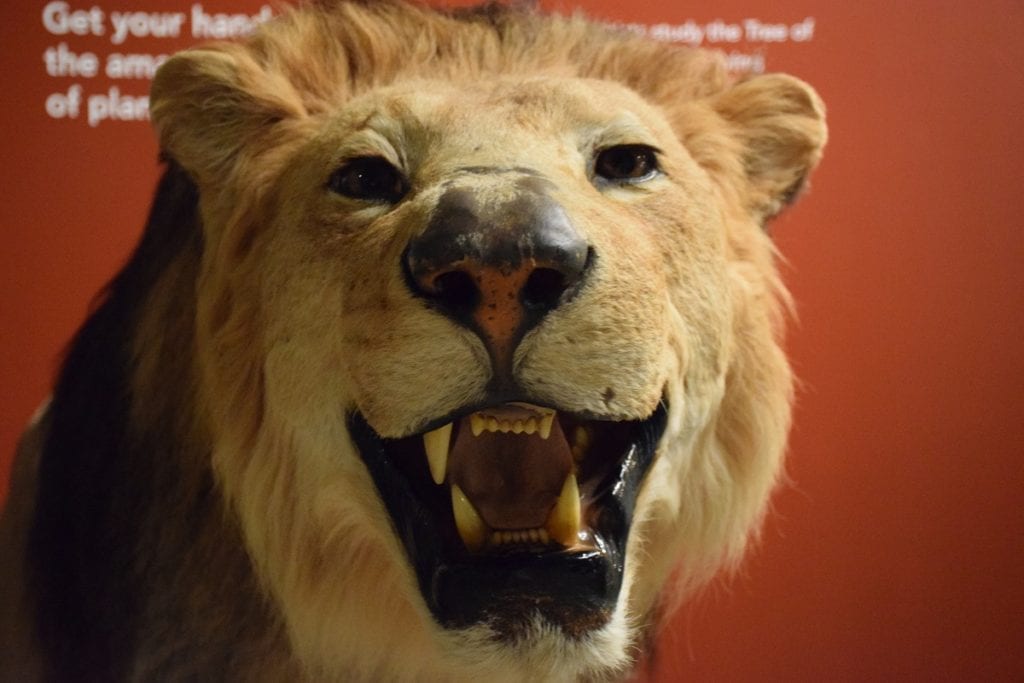
You can pet the mane of this lion at Discovery Basecamp, our new permanent gallery where visitors can explore, touch, and examine specimens from nature up close.
New Discovery Lets Researchers Get Inside a Dinosaur’s Head
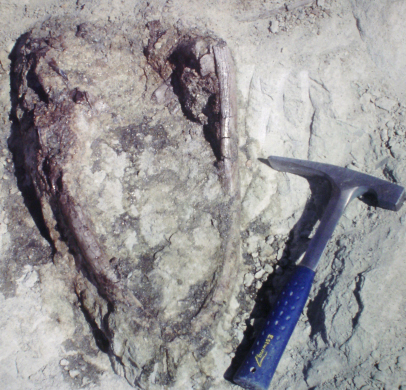
In some areas of the world, the fossils of sauropod dinosaurs are so common that paleontologists literally trip over the bones of these huge, long-necked, long-tailed plant-eaters that many people think of when they hear the word “dinosaur.”
While some kinds of sauropod bones are common, others such as skulls are more elusive – which makes a new discovery that was coauthored by a Carnegie Museum of Natural History paleontologist very exciting.
A skull discovered in a rural area of southern Chubut Province, Argentina, will give a face and name to a ten-ton sauropod that plodded around the southern hemisphere about 95 million years ago – Sarmientosaurus musacchioi.
Assistant Curator of Vertebrate Paleontology Matt Lamanna worked on a team that named the new species of dinosaur, which he said will yield a wealth of insights into the biology and behavior of titanosaurs, a group of sauropods that includes the most massive land animals that have ever existed. The fossil was originally discovered by the team leader Rubén Martínez of the Universidad Nacional de la Patagonia San Juan Bosco in Chubut.
The skull Martínez and his team discovered is arguably the most complete and well-preserved titanosaur skull ever found. It provides scientists with their first good look at the head of an
anatomically primitive titanosaur.
Scientists from Ohio University Heritage College of Osteopathic Medicine were able to reconstruct a model of what the dinosaur’s brain would have looked like. Despite the colossal size of the animal, its brain was probably only the size of an orange!
Lamanna said that Sarmientosaurus is one of the most exciting discoveries he’s worked on in his career and will provide researchers with information on the origins and evolutionary relationships of titanosaurs.
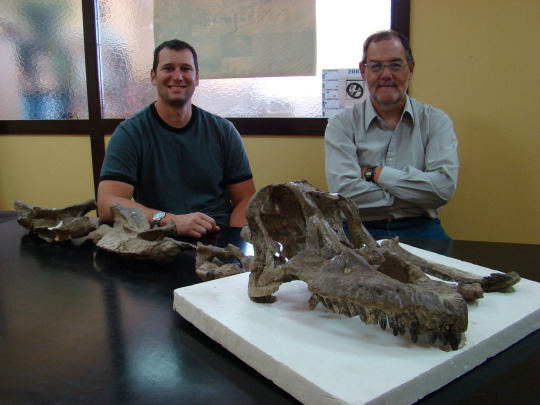
Above: Research team members Dr. Rubén Martínez (Universidad Nacional de la Patagonia San Juan Bosco, Comodoro Rivadavia, Argentina, right), and Dr. Matt Lamanna (Carnegie Museum of Natural History, Pittsburgh, USA, left) with the skull and neck skeleton of the new titanosaurian dinosaur species Sarmientosaurus musacchioi.
Further information and resources:
http://dx.plos.org/10.1371/journal.pone.0151661
Still images, animations, and interactive 3D digital model for download (with captions and credits): https://www.dropbox.com/sh/in3tupno91h0haw/AACJmvc05hB7fk5tkeNcwgCBa?dl=0
YouTube animation of the Sarmientosaurus skull and brain endocast: https://www.youtube.com/watch?v=Zb8e5ffEC74
Interactive Sketchfab animation of the Sarmientosaurus skull: https://skfb.ly/MKOP
Interactive Sketchfab animation of the transparent Sarmientosaurus skull showing the brain endocast inside: https://skfb.ly/MKLO
Interactive Sketchfab animation of the Sarmientosaurus brain endocast: https://skfb.ly/MKKH
Carnegie Museum Scientist Discovers New Species of Frog
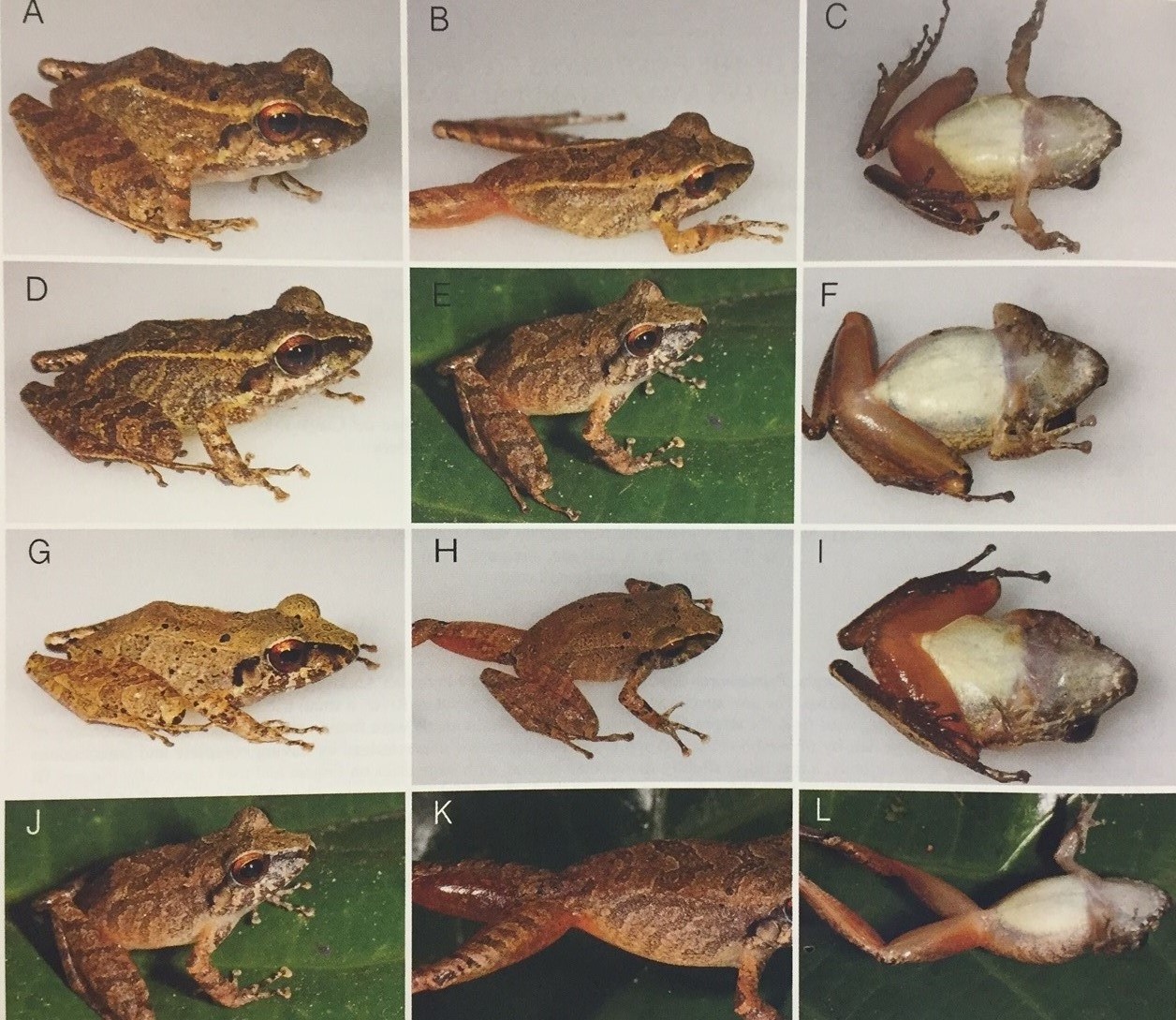
Discovering a new species is no easy undertaking in 2016.
Dr. José Padial and a team of scientists had to venture deep into the Amazonian rainforest where they trod through dense bamboo and the dark of night to discover a new species of frog that was unknown to science until now.
Padial, the Carnegie Museum of Natural History assistant curator of amphibians and reptiles, led the team of scientists into the Peruvian back country in 2014, where they identified a new species of frog – Pristimantis iiap. The frog was named and described in the February 2016 Annals of the Carnegie Museum of Natural History.
The team found and identified a species of frog in the lowland forests of the Peruvian Amazon calling after dark along the bamboo dominated forests of the Sepahua River, a small tributary of the Urubamba River.
Pristimantis iiap, was named after the Instituto de Investigaciones de la Amazonia Peruana (Peruvian Amazon Research Institute or IIAP) for its role in biodiversity research and conservation.
Pristimantis iiap belongs to the Pristimantis conspicillatus species group, a group that has a broad distribution in northern South America across a diversity of habitats that include the Amazonian forests, Andean hills, the dry forests of the Cerrado, and the Mata Atlantica of eastern Brazil. Analyses of its mating call and anatomical traits provided evidence of the distinctiveness of this new species.
The 2014 trip was part of a series of expeditions in the Fitzcarrald Arch in southeastern Peru, one of the least explored areas of the Amazon basin. Little is known about the herpetofauna there, but this expedition and other recent explorations have discovered that there are more reptiles and lizards in that area than was previously thought. Several other new species are still being described, so stay tuned for more fascinating discoveries!
José Padial is the William and Ingrid Rea Assistant Curator of Herpetology at Carnegie Museum of Natural History. He most recently traveled to the remote Vilcabamba mountains of Peru in the pursuit of biodiversity research. Read more at www.tumblr.com/blog/expeditions-carnegiemnh.
